-
![LANG-CODE-KEY]() LANG_NAME_KEY
LANG_NAME_KEY
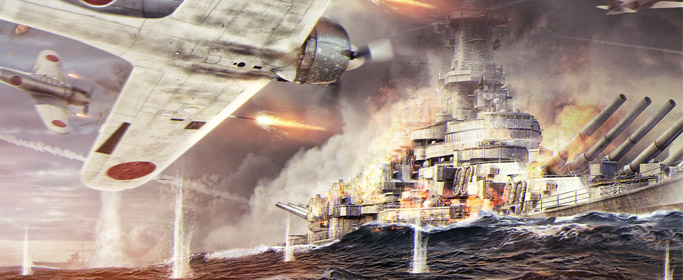
Pilots,
Publicised in newspapers, TV, cinema and games all over the world, the attack on Pearl Harbor ranks consistently among the most frequently told stories of 20th century wartime reporting. The events of 7 December 1941 were not only the tragic escalation of a long-brewing conflict between the U.S. and the Empire of Japan, but also triggered America to enter theongoing Second World War, leading to profound consequences on a global scale. We intend to honour the memory of this fateful day with a dedicated special for our virtual pilots, bringing you exclusive offers, missions and an insightful recap in the history flashback below.
‘Attack on Pearl Harbor’ Special | |||
|---|---|---|---|
|
All offers and missions will be available |
|||
Triple XP for first victory of the day
Didn’t get enough XP during last week’s special? Try again this weekend!
50% discount on ammunition
Use your chance to stock up on expensive ammunition at a not so expensive price!
50% discount on the following planes:
 |
Curtiss P-36 Hawk |
|||
 |
Brewster F2A Buffalo |
|||
 |
Lockheed P-38F Lightning |
|||
 |
Mitsubishi A6M1 Zero |
|||
 |
Curtiss P-40 Warhawk |
|||
 |
Grumman F4F Wildcat |
|||
 |
Mitsubishi A6M2 Zero |
Fly the aircraft of that era from both the East and the West.
30% discount on the following planes:
 |
North American P-51A Mustang |
|||
 |
Chance-Vought F4U-1 Corsair |
|||
 |
Grumman F7F Tigercat |
|||
 |
Mitsubishi A6M5 Zero |
|||
 |
Lockheed P-38J Lightning |
Venture into the higher tiers where the stakes are higher and the competition is fiercer!
In honour of this historic event, we’re releasing a special package containing a U.S. and Japanese plane that come with two free hangar slots and an extra free day of Premium Account.
|
Pearl Harbor Package
|
|
€19.99 |
Finish the two dedicated missions and you can fly away with extra Crew XP as well as a plane-load of helpful consumables!
|
Mission 1: Japan Attacking | |
|---|---|
|
Goal |
Destroy at least 1 U.S. enemy aircraft and win the battle flying the required aircraft. |
|
Reward |
Double Crew XP for the battle |
|
Conditions |
Must be flying a Japanese aircraft |
|
Mission 2: America’s Response | |
|---|---|
|
Goal |
Win a battle and become one of the top 3 experience earners on your team while flying the required aircraft. |
|
Reward |
1 x First Aid Kit |
|
Conditions |
|
The surprise Japanese attack on the US naval base at Pearl Harbor is one of the best-known incidents of World War II. Here we examine what really happened on 7 December 1941.
Pearl Harbor is a lagoon harbour on the island of Oahu in Hawaii. The shallow entrance provided a natural defence that large ships were unable to cross.
Satellite image of Pearl Harbor showing the natural ‘lagoon harbour’
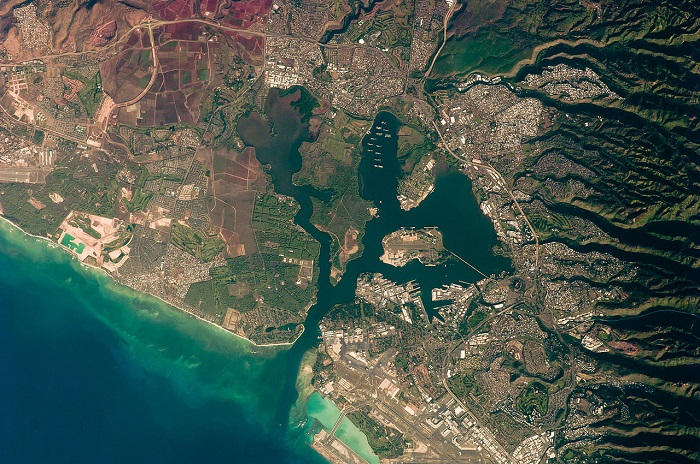
After the Hawaiian kingdom was overthrown and the islands were annexed by the United States, the harbour officially became a naval base in 1899. A period of intense development followed, including the dredging and widening of the channel to allow access for larger ships.
By the end of the 1930s, despite attempts by the US to remain neutral, it was no secret as to which side of the European conflict they favoured. After war broke out, they supplied numerous vehicles to Britain and its allies under the lend-lease programme.
Meanwhile, on the other side of the world, Japan was getting restless. They invaded and conquered Manchuria and later signed the Tripartite Pact, which made Japan a formal member of the Axis alliance with Germany and Italy.
Despite the deterioration in relations between the US and Japan, the US authorities didn’t believe that Japan would initiate conflict. They certainly didn’t expect Japan to launch a surprise attack before formally declaring war, and they never imagined that the attack would fall on Pearl Harbor.
On Saturday, 6 December, US President Franklin Roosevelt made an appeal to Japan for peace, but there was no reply. The Americans intercepted coded messages from Japan that implied that an attack would take place in Southeast Asia.
Japanese fighter planes (A6M Zero) taking off to Pearl Harbor in the morning of 7 December 1941
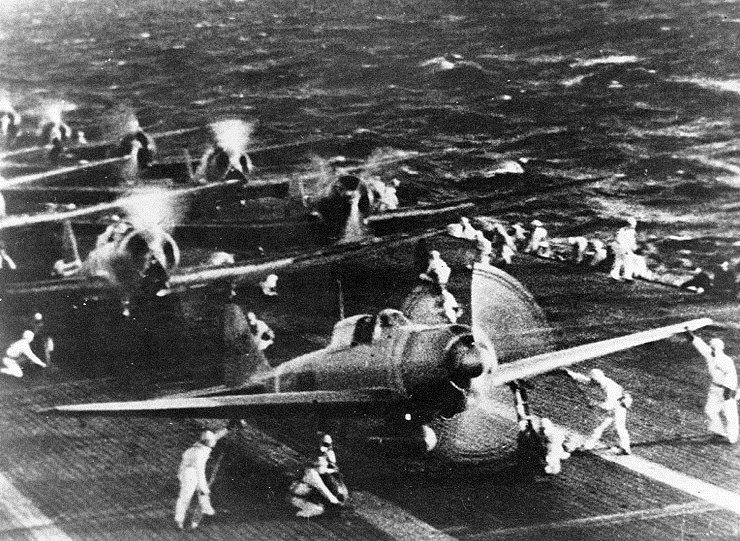
On Sunday 7 December (8 December in Japan), 6 Japanese aircraft carriers with 423 planes moved into position about 370 km from Oahu. At 6am, the first wave of 183 planes took off - a mixture of bombers and A6M ‘Zero’ fighters. They began to arrive just after 7am and were detected by Pearl Harbor’s radar. However, the report was dismissed by officers, who believed them to be some B-17 bombers that were expected to arrive. Meanwhile, the second wave of planes took off from the Japanese carriers.
The first strike took the Pearl Harbor base completely by surprise. The first wave targeted the infrastructure (airfields and battleships), while the second went for other ships and facilities. 8 battleships were damaged, 5 of which were sunk completely. 10 smaller ships were also damaged or lost, along with 188 aircraft. However, the attack failed to hit the prime targets: three major US aircraft carriers normally based at Pearl Harbour, which were out of the port at the time.
In total, over 1,000 people were wounded and 2,000 were killed. Half of the casualties were on the USS Arizona, which exploded when a bomb penetrated the forward magazine. The Japanese lost just 27 planes and 5 midget submarines.
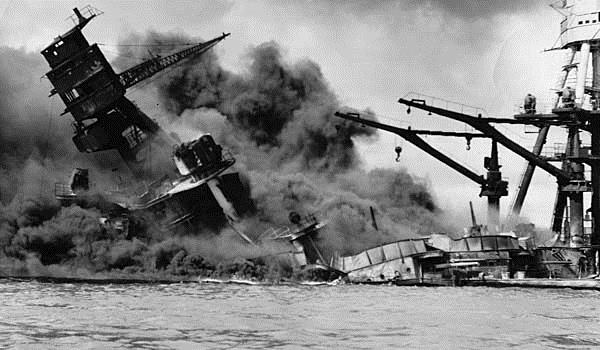
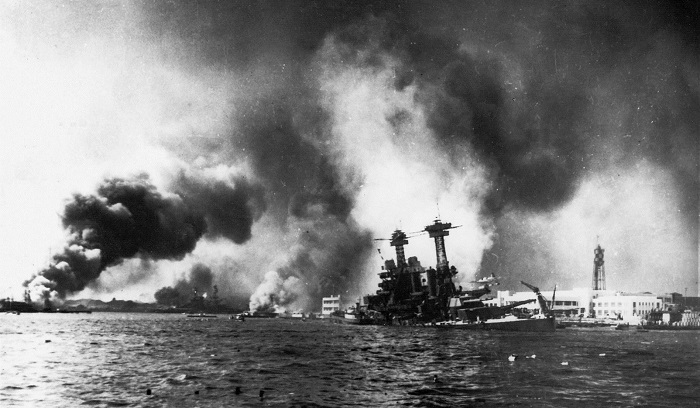
The destruction of the USS Arizona (left) and USS California (right)
The Japanese declaration of war against the USA was finally received at 2:30pm, several hours after the attack began. The other Axis nations, Germany and Italy, soon followed with their declarations.
Although the attack was hugely successful for the Japanese, it ultimately failed to provide the strategic advantage that they had hoped for. Much of the damage at Pearl Harbor was soon repaired and in the end, only 3 battleships were lost for good (including the Arizona). The Japanese attack failed to disrupt America’s participation in the war and actually provided impetus for the US to modernise its equipment. It also rallied the population, who until then had been wary of joining the war.
Brush up on your history then jump straight into battle, pilots!